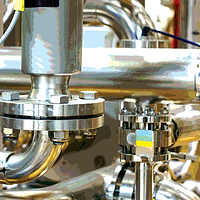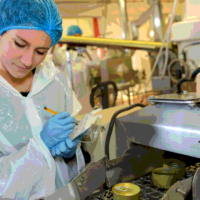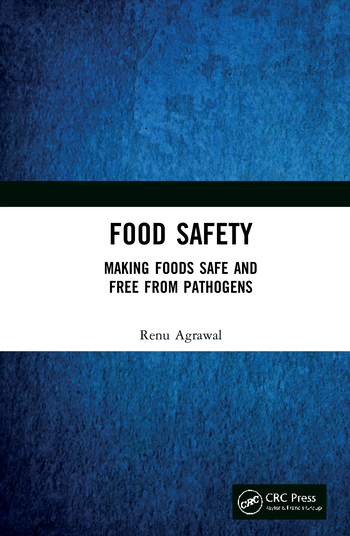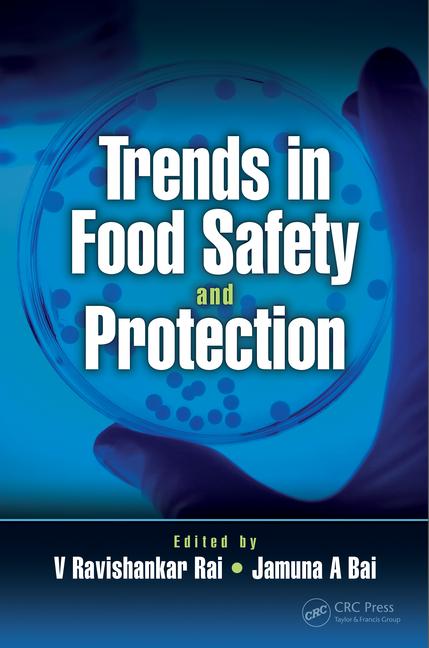Preventive Maintenance: Another Preventive Control?
Keeping food safe is the ultimate goal

Photo Credit: milanvirijevic/E+ via Getty Images
The power of maintenance is in keeping equipment running so that the company can keep making and selling products. The superpower of maintenance is when it is transformed into a preventive control. By doing so, preventive maintenance (PM) effectiveness is significantly enhanced by helping prevent food safety issues from occurring, and so is the company’s confidence in its quality and food safety programs.
The superpower is in including the maintenance team as an equal partner in all food safety actions and in including food safety needs in the setting of priorities for the maintenance team. These actions reduce the risk of causing consumer illness or injury, reduce the risk of adverse regulatory actions by the U.S. Food and Drug Administration (FDA) or the U.S. Department of Agriculture (USDA), and increase the confidence of customers and consumers in the company’s products.
What Is PM?
“Keeping equipment running.” This important objective is why maintenance organizations exist and is built into almost all definitions of PM. Definitions vary by person, but for most people, a successful PM program contains the following often-overlapping elements: (1) keeping assets in good working order (maximizing their useful lives), (2) conducting maintenance work before problems occur, (3) establishing a means to schedule/predict maintenance work, and (4) preventing catastrophic or unexpected equipment failure.
The Authorities’ View
“Maintenance” is addressed by regulatory bodies around the world. The topic is not always designated as “preventive,” yet it is clear that the authorities are addressing much more than just keeping equipment running efficiently. The main point of all these regulations: Use effective maintenance programs to control food safety risks in the plant. Prevent contamination of the food.
FDA addresses the subject in its Current Good Manufacturing Practices (cGMPs)1 in the Code of Federal Regulations Title 21, Part 117 (21 C.F.R. 117), especially Sections 117.35a and 117.40. Key points include that all buildings, fixtures, and other physical facilities “must be kept in repair adequate to prevent food from becoming adulterated.” In addition, equipment must be “adequately cleanable” and “must be designed, constructed, and used appropriately to avoid the adulteration of foods.” There is much more to the cGMPs relative to equipment, yet note that none of it speaks to keeping the equipment running to meet production volumes.
Please also note that FDA does not say how a maintenance department should be structured or how it should be run, but it does provide requirements for the outcome and expectations of their work!
Similarly, USDA has its own set of maintenance requirements, including in its “Sanitation Performance Standards,”2 to assess a company’s compliance. Of particular interest is Section 416.3, where it is stated, very similarly to FDA’s requirements, that equipment “must facilitate thorough cleaning” and must “not cause adulteration of product.”
Note that both FDA and USDA use a broad scope in their requirements of proper maintenance. Both agencies are looking for any areas of disrepair in a facility that might introduce a hazard into the food. By way of example, even if each area of a plant can be maintained at the proper temperature, this does not mean that humidity can be maintained properly (especially in the summer). Therefore, if walls, ceilings, and/or doors accumulate (condensed) water that could possibly fall onto food (even indirectly), then FDA or USDA will most likely consider this to be a noncompliance with their regulations.
Canada has new regulations, “Safe Food for Canadians Regulations,”3 where it is stated that equipment must be “designed, constructed, and maintained in a manner that prevents contamination of your food.” The regulations also specify that “you have a preventive maintenance program.”
The UK has myriad regulations addressing the construction and use of equipment. Under the Food Hygiene Regulations 852/2004,4 it is stated that food contact equipment must be “maintained in sound condition and be easy to clean.” Furthermore, such equipment must be “kept in such good order, repair, and condition as to minimize any risk of contamination.”
Extremely similar requirements exist in Australia’s “Primary Production and Processing” standards,5 India's "Good Manufacturing Practices,”6 and Brazil’s “Board Resolution RDC No. 275 on the Technical Regulation of Standard Operating Procedures and the Checklist of Good Manufacturing Practices applied to Food Producing/Industrializing Establishments”7 (especially Section 4.2.5).
And of course, there are the nongovernmental food safety certification bodies that address maintenance as part of their required audit elements. If a food company is following a third-party audit scheme such as Safe Quality Foods (SQF) or British Retail Consortium (BRC), these rules also require an enhanced PM program, even though they do not use that term explicitly. The SQF Code (Version 8.1, Sections 11.2.9 and 10) requires that “equipment…be constructed, installed, operated, and maintained…not to pose a contamination threat to products.” Furthermore, SQF requires that “the maintenance schedule shall be prepared to cover building, equipment and other areas of the premises critical to the maintenance of product safety and quality.”
Similarly, the BRC Code (Issue 8, Clause 4.7) requires “an effective maintenance programme…to prevent contamination….” The BRC furthermore states that “where there is a risk of product contamination by foreign bodies arising from equipment damage, the equipment shall be inspected at predetermined intervals….”
All the above sets of rules land in the exact same place: Nothing directly speaks to operability and efficiency of equipment; rather, they are all about preventing contamination of the food and avoiding food safety hazards. This is essentially a definition of a preventive control.
Other Types of Maintenance
There are different types of maintenance that a company undertakes, including preventive. They all affect a company’s ability to avoid risks and hazards in its operations.
“Design maintenance” refers to the work that goes into the design and construction of a piece of equipment prior to its being put into service. Relative to the purposes of this article, the most important part of design maintenance is sanitary design input. This type of equipment design favors materials of construction, cleanability, accessibility, and overall design that will allow the equipment to be sanitary throughout its years of operation.
An excellent set of principles for sanitary equipment design is provided by the American Meat Institute Foundation (in their Sanitary Equipment Design Principles publication8), which advocates that the design and construction of equipment is “to prevent bacterial ingress, survival, growth, and reproduction on both product and non-product contact surfaces of the equipment.” This is an excellent definition of “sanitary design.”
“Scheduled maintenance” is what typically makes up a PM program and is therefore often considered a synonym for PM. There are many ways to develop, execute, and track such scheduling, for example with maintenance management software that is available from many companies. The important thing to keep in mind is that such software is only as good as the thinking and data that go into it. You cannot rely on the software to make sure that equipment is running at top efficiency or is not causing food safety hazards. The best schedules are dynamic, taking into account changes in a facility's volume, seasonality, and other factors that might cause a failure sooner or later than originally anticipated. Over time, enough data can be compiled to drive an accurate PM plan.
“Corrective maintenance” is exactly what it sounds like—something failed unexpectedly, and the maintenance team now needs to react urgently. These types of instances cannot be avoided (they are a fact of life in a plant), yet learning from these situations to improve scheduled maintenance will help minimize these deviations and plant downtime.
Enhanced Maintenance as a Preventive Control
The maintenance programs summarized above can for the most part be carried out solely by the maintenance department (with appropriate communication with operations, of course). In fact, in most companies, this is indeed the charter of that department, and most companies are content (and successful) at letting the maintenance team operate independently in terms of these types of maintenance.
In food companies, however, there must also be an enhanced PM program, essentially using the PM program as another preventive control. There are three key tenets to this: (1) PM must include activities to prevent or minimize food safety risks; (2) the maintenance department should be actively involved in control of food safety (i.e., hazard identification and risk management); and (3) food safety needs must be incorporated into the priority setting (e.g., scheduled maintenance) of the maintenance department.
All these needs are remarkably consistent with what FDA legally requires in every food company’s food safety plan. FDA defines it as a “systematic approach to the identification of food safety hazards that must be controlled to prevent or minimize the likelihood of a foodborne illness or injury.” Note the use of the word “prevent” in the definition. This fits hand in glove with what a PM program is all about.
The Role of Maintenance
The maintenance department’s PM schedule drives the vast majority of the day-to-day work of that team. Hence, food safety needs must be integrated seamlessly into the schedule rather than as an add-on task. We all know that it is too easy to relegate add-on work to the sideline (“when we have more time, perhaps next weekend”). As short-term and long-term hazards are identified, and the risks associated with them are delineated, the potential impact on the business can be defined. This impact is predominantly influenced by the ability to cause harm to the consumer and/or by how frequently this might occur. These factors can easily be overlooked or at least overshadowed by other important business metrics such as cases per hour or downtime.
However, there is an additional enhanced PM role that the maintenance department must play. A governing principle of an effective food safety plan is a system that can actively and accurately identify hazards in the plant. Clearly, some of the potential hazards relate to the equipment. In this regard, the entire maintenance team needs to “think sensibly,” that is, always take note of what can be seen, heard, and touched in real time while walking the plant. Maintenance team members should frequently be talking with operators, as the latter are probably very familiar with how a piece of equipment operates and when something is amiss, no matter how minor that may look or sound or feel.
The Role of Operators
The following are examples of “minor” maintenance-related issues that can have a high impact on food safety risk:
Leaking pump shaft: Pump gaskets commonly get installed/replaced improperly, are slightly the wrong size, or just get old. All can result in food leaking out by the shaft. Machine operators will be the first to notice the leaks. Thus, in addition to cleaning up and/or putting a catch tray underneath the leak, notifying their maintenance colleagues could quickly lead to a long-term solution, even at the risk of some downtime. If not corrected, the possibility of contamination will quickly lead an inspector to identify this as an unacceptable food safety risk.
Metal detector alarms: A metal detector will routinely sometimes go off for no apparent reason. With the proper checks and verification (of product and of equipment), operators and/or quality control individuals can persuade themselves to resume operations. However, sometimes it is the same machine that does this seemingly randomly, which is easy to miss if this occurs on different shifts. Having these events documented and reviewed by the maintenance department, or, better, having the hands-on operators inform the maintenance team would be a better solution. The machine may need electronic calibration, or perhaps unbeknownst to the operators, R&D may have changed the formula for a customer-related reason (and inadvertently changed how the metal detector electronics interact with the food).
Product on outside of package: For the packaging of one-pound containers of deli salad, for example, sometimes product ends up on the outside of the container. This often results from the product being squeezed out when the lid is applied. A common solution is to have the operator simply wipe the container clean, which is expedient for production. On the other hand, this may be an indication that an automatic filler is not adjusted properly, the quantity has not been set properly for the container size, or the product density has changed. An excellent behavior in these situations is for the operators to alert the maintenance team to this issue!
In response to these issues, rather than worrying too much about operators having fail-safe systems, having to fill out inordinate levels of paperwork, and attend too many meetings, “think sensibly”: Have all operators communicate what they see, hear, and touch that is different from what is usual. In a way, they now become their own preventive controls.
The main point is that a food plant has instances like this occurring every day and across every shift. Seemingly small observations by hands-on personnel, when passed along to the maintenance team, can prevent long-term and/or continuous potential contamination issues. Operators experienced with a piece of equipment can quickly identify when it is working differently, even in small ways. Clearly, operators need to be part of a very robust and ongoing training program on the equipment they use, and they need efficient communication channels (records, interactions with supervisors) to notify others of differences that they observe. However, once the maintenance team has been notified of an operator observation, they are highly capable of diagnosing the issue, for example, as a quick fix or a sign of trouble to come.
The Role of Executive Leadership
Executive leadership plays a key role in engaging and empowering the maintenance team. First and foremost is making sure that maintenance is included in food safety actions, the company's Hazard Analysis and Critical Control Points team, and cross-functional inspection teams. A corollary to this is holding the maintenance department responsible and accountable for doing so. This is engagement.
Equally important is making sure that operational requests do not necessarily supersede maintenance requests, that all such requests are vetted and triaged in the context of long-term business priorities, and that other functions are held responsible and accountable for regular information flow from line operators to maintenance. This is empowerment.
Sometimes the right decision is pulling a piece of equipment out of service. Sometimes it is pulling very capable operators off a line for them to receive more training on the operation of specific equipment. Executive leadership can deliver strong messages to the entire organization by these types of actions, which are powerful in helping the company avoid food safety hazards.
Conclusions
For safe foods, the authorities (governmental and third-party certification bodies) are saying that PM is more than just keeping equipment running. Having an “enhanced” PM program is necessary—and required—to prevent food safety hazards and risks. To be successful, consider thinking of a PM program as a preventive control and setting up the program in the same way other preventive controls are set up. This could include the following actions:
- Design, build, and operate equipment for microbiological cleanliness, that is, for sanitary conditions.
- Include and engage maintenance as part of the company’s food safety teams and its food safety plan.
- Include and engage production floor operators with maintenance partners to foster two-way communication.
- Set priorities for food safety cross-functionally, not just with the quality assurance/food safety department.
Leveraging maintenance (of all types) as a preventive control will help the facility reduce or eliminate food safety hazards by helping to identify potential hazards to begin with, and will help drive effective repairs and design changes to minimize or prevent those hazards. The importance of a maintenance preventive control is therefore as important to the company as the preventive controls that it institutes for processing, food allergens, and sanitation. Call it a stealth PC or, even better, a superpower PC.
References
- www.accessdata.fda.gov/scripts/cdrh/cfdocs/cfcfr/CFRSearch.cfm?CFRPart=117.
- www.fsis.usda.gov/wps/portal/fsis/topics/regulatory-compliance/compliance-guides-index/sanitation-performance-standards/sanitation-compliance-guide.
- www.inspection.gc.ca/food-safety-for-industry/toolkit-for-food-businesses/sfcr-handbook-for-food-businesses/eng/1481560206153/1481560532540?chap=0.
- www.fsai.ie/uploadedFiles/Consol_Reg852_2004.pdf.
- www.legislation.gov.au/Details/F2012L00292.
- law.resource.org/pub/in/bis/S06/is.16021.2012.pdf.
- extwprlegs1.fao.org/docs/pdf/bra181024.pdf.
- www.meatinstitute.org/ht/a/GetDocumentAction/i/97261.
Bob Lijana, M.Sc., has held director- and VP-level positions in food safety, quality, and operations for over 35 years at companies producing ready-to-eat foods, prepared meals, and pasteurized juices. He has a B.Sc. and an M.Sc. in chemical engineering from the Massachusetts Institute of Technology and the University of California–Berkeley, respectively.
Looking for a reprint of this article?
From high-res PDFs to custom plaques, order your copy today!






.webp?t=1721343192)

